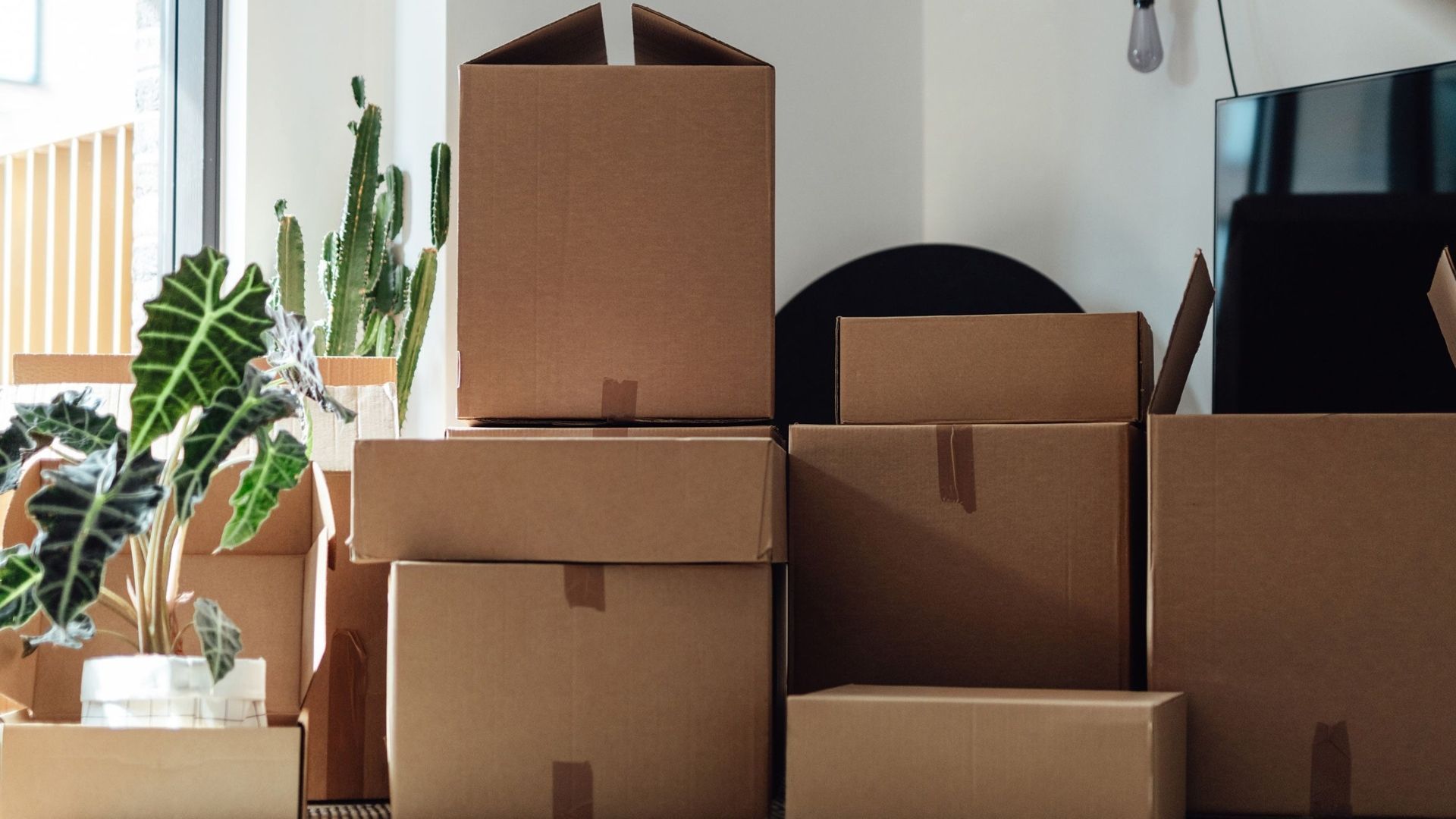What to Do if You Have No One to Help You Move?
You can move by yourself even when no one is available to help. While it takes more planning and effort, millions of people successfully complete solo moves every year using the right tools, services, and strategies.
Why People End Up Moving Alone
Moving without help happens more often than you might think. According to the U.S. Census Bureau, people who tackle DIY moving without help come in at 1.35 million annually, showing you're definitely not alone in this situation.
Common Reasons for Solo Moves
Friends and Family Are Busy Everyone has their own lives and responsibilities. Your friends might have work, kids, or other commitments that prevent them from helping on your moving day.
Short Notice Moves Sometimes life throws you a curveball. You might get a job offer that starts right away or need to move quickly due to other circumstances.
Budget Constraints Those who used a moving company spent $2,907 on their move — more than double the $1,334 DIY movers spent, according to CNBC's 2024 moving cost analysis. When money is tight, moving yourself becomes the most practical option.
Living Far from Support Network If you've moved to a new city for work or school, you might not have built a local support network yet.
Hiring Professional Moving Help
When you can't get friends to help, professional moving services become your best friend. You don't need to hire a full-service moving company to get the help you need.
On-Demand Moving Apps
TaskRabbit TaskRabbit connects you with local movers who have the skill, experience, and equipment to make your move go as smoothly as possible. TaskRabbit's furniture moving service costs start at about $40 per hour.
You can hire TaskRabbit helpers for:
- Loading and unloading trucks
- Heavy lifting
- Packing assistance
- Single item moves
U-Haul Moving Help Moving Help® has the best local movers to help you load and unload during your move. This service connects you with local helpers who specialize in moving tasks.
HireAHelper Similar to other platforms, HireAHelper lets you book moving assistance by the hour. You can find helpers who bring their own tools and equipment.
Labor-Only Moving Services
Many local movers offer labor-only services. This means they provide the muscle while you handle the truck rental and driving.
What Labor-Only Services Include:
- Loading your rental truck
- Unloading at your new home
- Basic furniture protection
- Heavy lifting expertise
Cost Savings Labor-only services typically cost 50-70% less than full-service moves. You still get professional help with the hardest parts while saving money.
Essential Tools and Equipment for Solo Moving
The right tools make moving alone much safer and easier. If you can't find anyone to help and don't have the budget to hire professional movers, the best option is to use equipment—like quality gloves, furniture sliders, straps, and dollies—to make moving heavy items manageable.
Must-Have Moving Equipment
Furniture Dollies and Hand Trucks A sack barrow, or hand cart, will allow you to move numerous boxes at once, or even appliances and furniture. You can rent these from hardware stores or moving truck companies.
Furniture Sliders These small pads go under furniture legs and let you slide heavy items across floors without scratching or straining your back.
Moving Straps and Lifting Straps Use furniture pads, blankets, or lifting straps to transport large pieces of furniture like bookcases, couches, and beds to take the pressure off your body.
Heavy-Duty Plastic Wrap Simply wrap anything up that has the potential to fly open (like nightstands with doors) or bump into walls (like chair legs). This acts like extra hands to keep things secure.
Where to Get Moving Equipment
- Home improvement stores (Home Depot, Lowe's)
- Moving truck rental companies (U-Haul, Budget)
- Tool rental shops
- Storage facilities
Most places offer daily or weekly rentals, so you don't need to buy everything.
Smart Packing Strategies for Solo Movers
When you're moving alone, how you pack makes a huge difference in what you can actually handle.
Pack Light, Pack Smart
Use Smaller Boxes Packing smaller boxes that are lighter in weight is how to move by yourself without the risk of dropping items or getting hurt. Even if it means using more boxes, lighter loads are always easier to manage alone.
Strategic Weight Distribution
- Books and heavy items go in small boxes
- Light items like pillows go in large boxes
- In each box, place the large or heavy items at the bottom first to prevent lighter objects from getting crushed
Use What You Have Make use of your suitcases and pack heavy items in them such as hardback books. As your suitcase has wheels you can pack it with heavy items and not have to worry about lifting it.
Room-by-Room Packing System
Pack Room By Room – Packing room by room ensures that items don't get mixed up. You'll want to label each box according to the room and some items so you know what is in each box.
This system helps you:
- Stay organized
- Unpack efficiently
- Know exactly what's in each box
- Avoid mixing fragile items with heavy ones
Decluttering: Your Secret Weapon
Decluttering your house is an essential first step to any move—and it's especially helpful when you're moving on your own. By getting rid of items you no longer need, there will be fewer boxes to haul on moving day.
The 6-Month Rule
Follow the six month rule. If you haven't used an item in the past six months, you probably won't use it at your new place.
Make Money While You Declutter
Sell High-Value Items If you have high value items that you no longer use, sell them online. While you might not get the full retail value that you paid, you can earn a few extra bucks to help out with the move.
Furniture Considerations If at all possible you will want to move with very little, if any, furniture at all. Whilst moving furniture on your own is possible (we will cover this later), it will be far easier to move by yourself if you just take boxes and clothes with you to your new place.
Consider whether it's cheaper to sell furniture and buy new pieces rather than paying to move heavy items.
Transportation Options for Solo Moves
You have several options when it comes to getting your stuff from point A to point B.
Moving Truck Rentals
Pros:
- Complete control over timing
- Usually the cheapest option
- Available in multiple sizes
Cons:
- You do all the loading and driving
- Long-distance DIY moves using rental trucks typically range from $500 to 1,700, excluding fuel, deposits, and mileage charges
Moving Containers (PODS)
Moving containers offer a middle ground between DIY and full-service moves. If you can afford to take your time with packing, you can rent a moving container. It will be delivered to your current address for you to load at your leisure and then picked up and delivered straight to your new address for you to unload.
Benefits:
- Load at your own pace
- No driving required
- Professional transportation
- Moving container cost: The average cost to move within 50 miles with portable moving container companies is around $400–$700 for one container
Multiple Car Trips
Moving over several days allows you to use a car rather than go to the expense of hiring a large van. This works well for local moves and gives you maximum flexibility.
Safety Tips for Moving Alone
Moving by yourself requires extra attention to safety since you don't have someone watching your back.
Physical Safety
Know Your Limits Although you can move quite a bit by yourself, you will need help with heavy items, such as appliances and couches. Otherwise, you risk hurting yourself or damaging your items.
Proper Lifting Techniques According to the Occupational Safety and Health Administration (OSHA), improper lifting causes thousands of workplace injuries each year. When moving alone:
- Lift with your legs, not your back
- Keep items close to your body
- Take frequent breaks
- Stretch on moving day. Remember, you're about to do a few things your body hasn't done in quite some time
Stay Hydrated and Fed Have a good breakfast. This will give you the initial energy you need throughout the day to carry on the difficult tasks. Drink lots of water.
Security Considerations
Moving Day Security
- Don't advertise your move on social media
- Keep valuable items with you
- Have someone check on your old place if possible
- Secure your new home immediately
Document Everything Take photos of valuable items before packing and after unpacking. This helps with insurance claims if anything gets damaged.
Finding Emergency Moving Assistance
Sometimes you need help right away and don't have time for extensive planning.
Same-Day Moving Help
TaskRabbit and Similar Apps Schedule a Tasker as early as today. These platforms often have helpers available for same-day bookings.
Local Moving Companies Some emergency moving companies offer last-minute services, though they typically charge premium rates.
Community Resources
Local Facebook Groups Many neighborhoods have Facebook groups where you can ask for moving help. People are often willing to help for pizza and drinks.
College Students Contact local colleges or universities. Students are often looking for quick cash and can provide strong backs for a few hours.
Neighborhood Apps Apps like Nextdoor connect you with neighbors who might be willing to help for a reasonable fee.
Cost Breakdown: DIY vs Professional Help
Understanding the real costs helps you make the best decision for your situation.
DIY Moving Costs
Moving locally will cost between $150 and $250, covering the price of renting a moving truck and buying packing supplies. DIY long-distance moves can cost $1,550 to $2,350 or more.
Typical DIY Expenses:
- Truck rental: $30-$500 locally
- Packing supplies: $50-$200
- Equipment rental: $50-$150
- Fuel and mileage fees
- Food and drinks for the day
Professional Labor Costs
Local movers will cost anywhere between $80 and $100 per hour and up. For labor-only services, you might pay:
- 2 movers for 4 hours: $640-$800
- Equipment often included
- Insurance coverage
- Professional expertise
Hybrid Approach Savings
Many people find the sweet spot by combining DIY packing with professional loading help. This gives you significant savings while reducing the physical strain and time commitment.
Planning Your Solo Move Timeline
Good planning makes solo moves much more manageable.
8 Weeks Before
- Research moving services in your area
- Start decluttering and selling items
- Begin collecting free boxes
- Research your new neighborhood
4 Weeks Before
- Book your moving truck or container
- Arrange time off work
- Start packing non-essential items
- Confirm moving help if hiring assistance
2 Weeks Before
- Arrange utilities transfer
- Confirm all moving arrangements
- Pack everything except essentials
- Prepare an essentials bag
Moving Day
Start early on moving day. There's nothing worse than rushing your move day or waiting until it gets so hot outside it's impossible to move.
Moving Day Checklist:
- Start early (6-7 AM is ideal)
- Have snacks and water ready
- Keep important documents with you
- Take photos of valuable items
- Do a final walkthrough
Unpacking and Settling In Alone
Moving in is just as important as moving out when you're doing it solo.
Strategic Unpacking
After moving yourself into your new home, instead of opening all of the boxes and sorting them after the move, simply put boxes in their designated rooms. Then, unpack one room at a time.
Priority Rooms:
- Bathroom (you'll need this first!)
- Bedroom (you need somewhere to sleep)
- Kitchen (basic food prep)
- Living areas
Setting Up Essential Services
Make sure you have these basics working on day one:
- Electricity and water
- Internet connection
- Basic phone service
- Security systems if applicable
When to Call in Professional Movers
Sometimes hiring professionals is the smartest choice, even if it costs more.
Red Flag Situations
Call professionals if you have:
- Pianos or other specialty items
- Valuable antiques
- Medical equipment
- Items requiring special handling
Physical Limitations If you have back problems, injuries, or other health concerns, the cost of professional help is much less than the cost of getting hurt.
Time Constraints Moving companies save you time and stress. Moving into a new home can be a stressful experience. Allowing a pro to take care of the heavy lifting and transporting of items allows you to focus on other important details.
Making Solo Moving Less Stressful
Moving alone can feel overwhelming, but there are ways to make it easier on yourself.
Mental Health Tips
Stay Connected Whether you chat with a friend on speakerphone while you pack, schedule regular video calls with friends and family, or reach out to online communities in your new neighborhood, having a supportive social network can help you feel at home no matter where you are.
Reward Yourself Rewarding yourself for checking items off your to-do list, such as a fancy coffee for a small task or a night out for a big task helps maintain motivation.
Take Breaks Scheduling downtime so you can physically and emotionally recharge and prevent burnout is crucial for solo movers.
Building Confidence
Instead of seeing yourself as alone, take the opportunity to empower yourself through your newfound independence. Build your confidence in your capabilities, resourcefulness, and problem-solving skills.
Every challenge you overcome during your move proves you can handle whatever comes next in your new home.
Common Solo Moving Mistakes to Avoid
Learning from others' mistakes can save you time, money, and stress.
Planning Mistakes
Underestimating Time Regardless of the circumstances, moving always takes longer than you think. When you're moving alone it can take even longer as you will have to do everything by yourself.
Poor Box Management Don't overpack boxes. Unbalanced or loosely packed boxes are often not allowed to be moved by movers, and they're dangerous to lift alone.
Forgetting the Essentials Bag Take a moment to think about what you're going to bring with you — not what you're going to load up. Things like your pet, important documents, food, clothes, and stuff you'll need the first few nights in your new place go into this category.
Physical Mistakes
Ignoring Your Body If you're not used to moving heavy items, you could end up injuring yourself in the process because you twisted or lifted a box the wrong way. This could delay your move by a few days!
Skipping Equipment Trying to save money by not renting proper equipment usually backfires. The small rental cost is worth avoiding injury and damage.
Special Considerations for Different Types of Moves
Different moves require different strategies when you're going solo.
Apartment Moves
Elevator Access Book elevator time in advance if your building requires it. This prevents delays and conflicts with other residents.
Stairs and Narrow Hallways The best way to move into a walk up building is to get some help from experienced movers. Not only will they make your move easier, but they will know exactly how to get your furniture safely up and down the stairs.
Long-Distance Solo Moves
Multiple Stops Plan rest stops every 2 hours when driving a moving truck. The National Highway Traffic Safety Administration reports that fatigue significantly increases accident risk, making regular breaks essential for safety.
Hotel Reservations Book accommodations in advance, especially during busy moving seasons.
Senior Moving
If you're a senior moving alone, consider specialized senior moving services that understand unique needs and challenges.
Technology Tools for Solo Movers
Modern technology can be your best helper when moving alone.
Useful Apps
Moving Checklist Apps Apps like "Moving Planner" help you stay organized and on track.
Inventory Apps Take photos and create digital inventories of your belongings.
GPS and Traffic Apps Plan your route and avoid traffic delays, especially important when driving a large truck.
Online Resources
YouTube Tutorials Learn proper lifting techniques and packing methods from video tutorials.
Moving Calculators Use online tools to estimate costs and truck sizes.
Review Websites Research moving companies and service providers before hiring.
Final Thoughts
Moving without help doesn't have to be overwhelming or impossible. With the right planning, tools, and services, you can successfully complete a solo move while staying safe and within budget.
Remember that hiring some professional help doesn't mean you've failed at doing it yourself. Smart solo movers know when to invest in assistance for the hardest parts while handling what they can manage alone.
The key is being realistic about your abilities, planning ahead, and not being afraid to ask for help when you need it. Whether that help comes from professional movers, moving apps, or the right equipment, you have more options than you might think.
Ready to start planning your solo move? Contact Last Stop Moving for professional assistance with the heavy lifting, or check out our moving checklist to stay organized throughout your move. Your solo move doesn't have to be a solo struggle.



